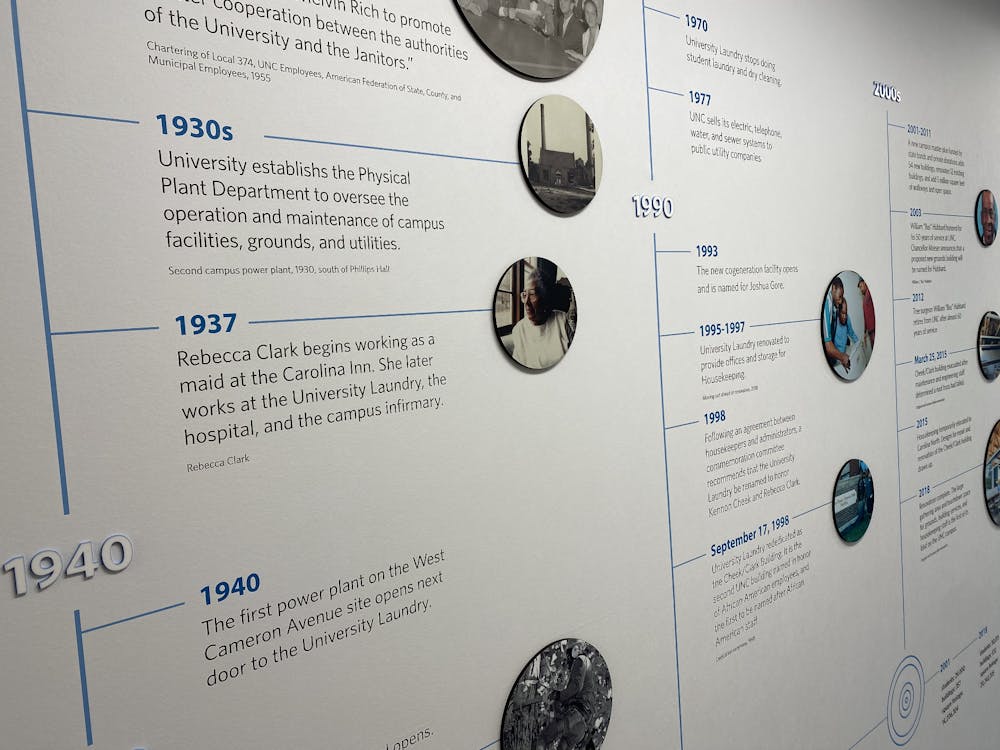A building on Cameron Avenue was renamed in 1998 to honor two African American housekeepers: Kennon Cheek and Rebecca Clark.
More than 20 years later, a celebration for Cheek, Clark and groundskeeper William “Bus” Hubbard took place on Jan. 23 in the Cheek Clark Building. It honored the late members of UNC's staff and opened the exhibit detailing their lives and contributions to the University.
The building, known as the University Laundry until its renaming, now houses grounds, housekeeping and building services.
Renaming the building after two African American staff members was an intentional effort to honor the contributions of African Americans to the University throughout the centuries, said Cecelia Moore, UNC’s former University historian who met with the families and completed much of the research for the exhibit.
Herb Richmond, director of housekeeping for UNC, said the new exhibit serves to keep employees from grounds, housekeeping and building services — all under one department — from feeling disconnected.
One wall of the exhibit, directly through the front door, gives information about Clark and Cheek, two former housekeepers at UNC.
Clark was a housekeeper and a nurse later in her career, the exhibit explains. While at UNC, she met often with other University employees, from fellow housekeepers to chancellors, to advocate for better conditions for housekeeping staff.
Cheek was a janitor in Venable Hall and co-founded the Janitors' Association at UNC. Cheek’s love of his family and desire to provide for them motivated him to stand up for adequate pay, among other improvements, Richmond said.
Cheek and Clark also served as leaders in the Chapel Hill community, and their children continued similar work, according to the exhibit.




